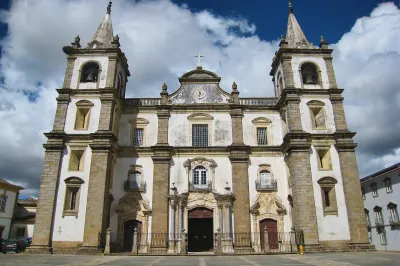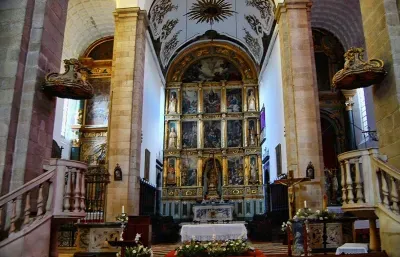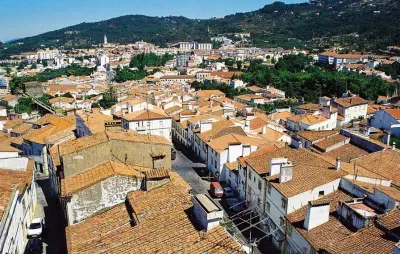
Sé de Portalegre Hugo Cadavez CC BY-SA
Portalegre cathedral interior Sacavem1 CC BY-SAPortalegre Cathedral
One of the first things you will see as you approach the small Alentejo city of Portalegre are the bell towers of the cathedral (Sé). Set on what is probably the highest point in the town it is visible from far and wide.
Built on the site of the church of Santa Maria do Castelo work on the cathedral began in 1556 by order of king D. João III. The cathedral was completed in 1575 with the laying of the final stone, the tip of the vault. The Sé de Portalegre was consecrated to Our Lady of the Assumption under the Diocese of Portalegre's first bishop, D. Julião de Alva.
Originally built in the late Renaissance style, the cathedral underwent many subsequent alterations. The most notable of these include the Baroque styling of the main entrance and bell towers added during the 18th century.
Inside, the cathedral's main altar is composed of an altarpiece of eight panels featuring ninety-six mainly Mannerist paintings which are quite unique in Portugal. To the right is the Chapel of the Blessed Sacrament and to the left is St. Peter's. The pulpits are constructed from white marble along with the grills that stand in front of the main chapel. Along with the striking 16th century tiles are a number of art works and sculptures by prominent artists such as Francisco Venegas, Gaspar Coelho, Fernão Gomes, Diogo Teixeira, Pedro Álvares Pereira and Simão Rodrigues.
Address
Praça do MunicípioPortalegre7301-855Phone
+351 245 309 480Attraction type

Portalegre travel guide »
Visiting Portalegre is not so much about visiting one interesting town, but about visiting a whole cluster of northern Alentejan towns, each with their own tale to tell, and with Portalegre at their centre. The region contains a wealth of historical monuments and anecdotes, awe-inspiring views from the fortified hilltop towns and a good smattering of prehistoric treasures to boot. For the…